The idea of dressing up patios, porches and balconies with colorful container gardens is nothing new. Whether they’re just a simple pot of herbs and pansies or a wild extravaganza of bold flowers and foliage, container gardens have become part of many people’s summer gardening, if not a year-round addiction. But have you ever considered putting planted containers into the garden border itself?
The only practical considerations are to make sure you can reach the planted pot for watering and maintenance and also to ensure that the pot can still drain. I usually place a paving stone on top of soil that has been well tamped down. With very heavy pots, I create a firm gravel base instead. I then set the container on the prepared base and lift it slightly using pot feet or pot toes. This ensures that water can drain and that the pot will not sink into the soil.
Let’s explore some design dilemmas and see how using container gardens in this way might just be the solution.
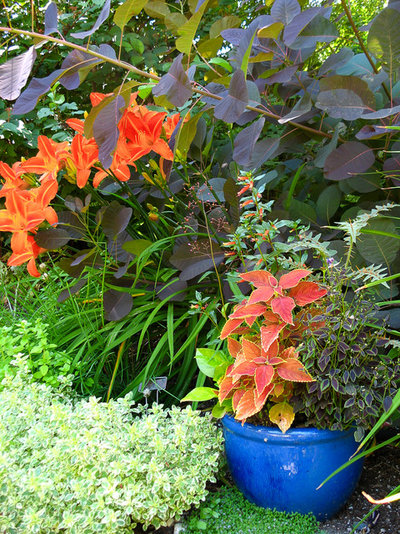
Le jardinet
Dilemma 1: Small pots can get lost on a patio.This cobalt-blue pot is only 12 inches tall and wide, yet lives large thanks to its being placed in a raised garden bed.
Notice how the colors of the container plants echo those in the border. When the orange daylily finishes blooming, the similarly colored coleus in the pot will continue the scheme. This small-scale design plays an important role in spanning the seasons.
Tip: Make a visual connection between small pots and their surroundings with color or plant selection.
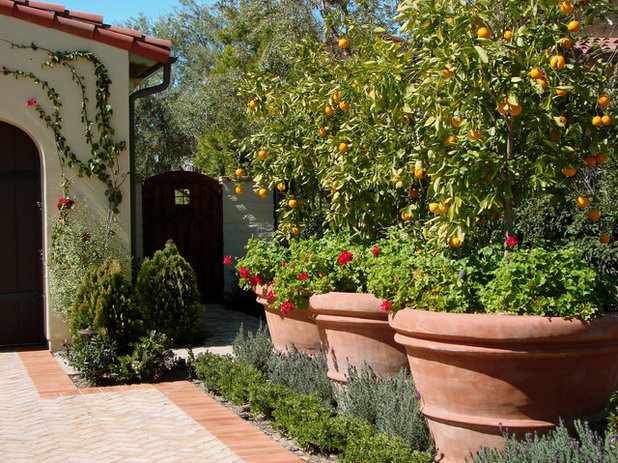
AMS Landscape Design Studios, Inc.
Dilemma 2: Large pots can overwhelm a space.These oversize terra-cotta pots are perfectly suited to the style and architecture of the home and scaled to provide plenty of room for the fruit trees. They could, however, completely dominate the space.
Low-growing plants have been added around them as a simple solution, creating the effect that the pots are in a larger garden. This softens the transition between pavers and pots, effectively ‘grounding’ them in the space.
Tip: Keep plantings simple to avoid large pots’ overwhelming a space; keep the style of the containers in line with the home’s architecture and consider having the containers ‘emerge’ from ground covers or grasses.
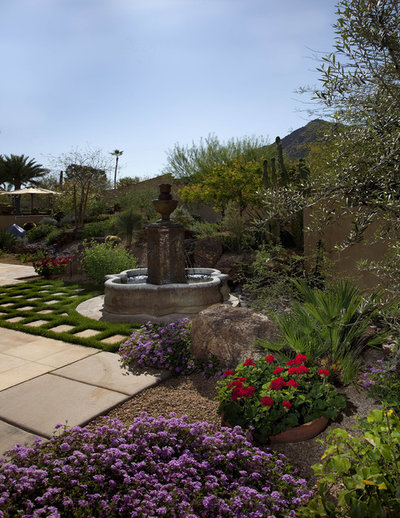
Exteriors By Chad Robert
Dilemma 3: The soil isn’t ideal.Plants are only as healthy as the soil you grow them in, and if you don’t match the plants’ needs to their environment, you’ll never have a thriving garden. Containers allow you to control the soil conditions in a discrete area, affording you the opportunity to grow water-loving plants in dry soil or those that prefer xeric conditions even if you have clay.
Tip: Use a custom potting mix appropriate for your container plants. Drought-tolerant plants prefer a lightweight, cactus-type potting soil. I have also used a basic seed-starting potting soil successfully for succulents and lavender. The more traditional container plants, such as geraniums, prefer a mix with approximately 20 percent organic matter added.
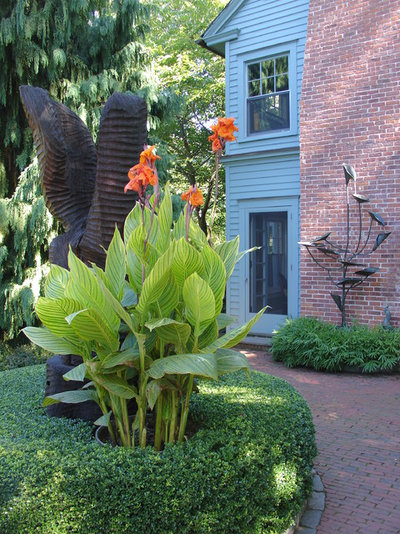
www.KarlGercens.com
Dilemma 4: The ground is not ideal for planting.All manner of problems can make inground planting a challenge, including mature tree roots that leave little planting space for anything else, and utility meters and ports that have to be left available.
Containers can be moved out of the way as needed and can be placed over tree roots if their weight isn’t excessive.
Tip: Creating a level surface to set pots on can be difficult if there are tree roots in the way. Spread an inch or two of gravel to create a stable base for your containers.
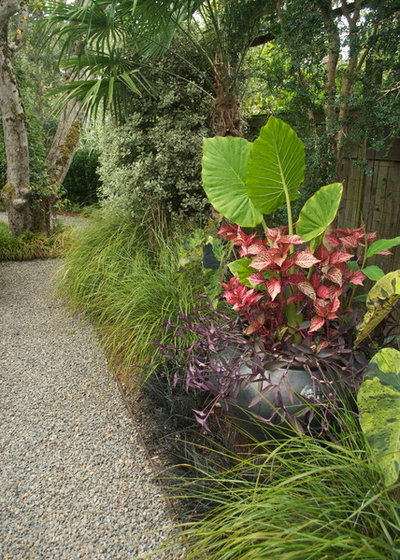 Dilemma 5: There’s a gap in the border.
Dilemma 5: There’s a gap in the border.This is my favorite excuse for adding a container to the border. Plants die at the most inconvenient times — usually just before a special event or garden party. Adding a fully planted container is a quick fix.
Also, I don’t always want to rush into a decision about plant choices in a new area; containers help bridge the gap while I contemplate longer-term options.
Tip: Use this opportunity to test new plants or colors.
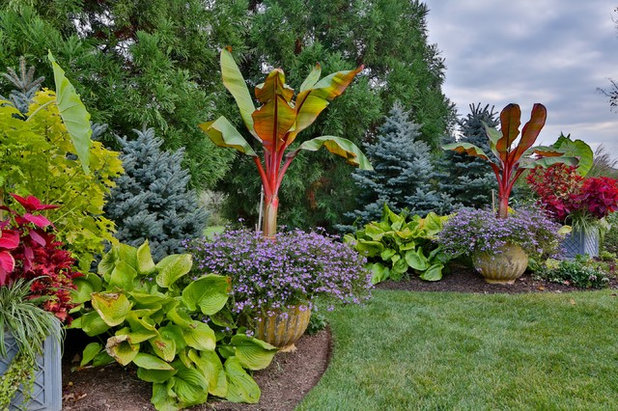
The Todd Group
Dilemma 6: You like to make a wild statement sometimes.The beauty of containers is that they are versatile. They can be moved or removed as your tastes change without a major garden renovation.
Containers give you the opportunity to experiment with new color schemes, plants and styles without a long-term commitment, so you can go big and bold this year but try something more casual in future. Who says conifers, hostas and bananas don’t mix?
Tip: If you want to be able to move your large containers around easily, consider using lightweight pots. A PotLifter is a great tool to have too.
More: 9 Tips for Creating an Artful Container Garden





